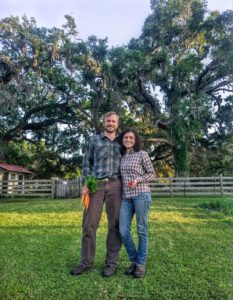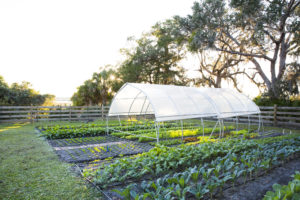
As the days get longer and temperatures climb, the garden starts to stand up tall. As tomato vines sprawl and peppers become heavy, crops benefit from a little support.
In the garden, we find it advantageous to trellis any climbing, viney crops like peas, pole beans, and cucumbers, or crops that bear heavy fruits like eggplant, peppers, and tomatoes. Trellising helps keep crops upright, creates better airflow, and reduces disease pressure. It also makes it hard for any ground dwelling critters to climb up and eat fruits and leaves. Supporting these crops also makes it easier to see and harvest the fruits, buttresses plants from high winds, and keeps their stems out of pathways.
TRELLISING FOR CLIMBING CROPS
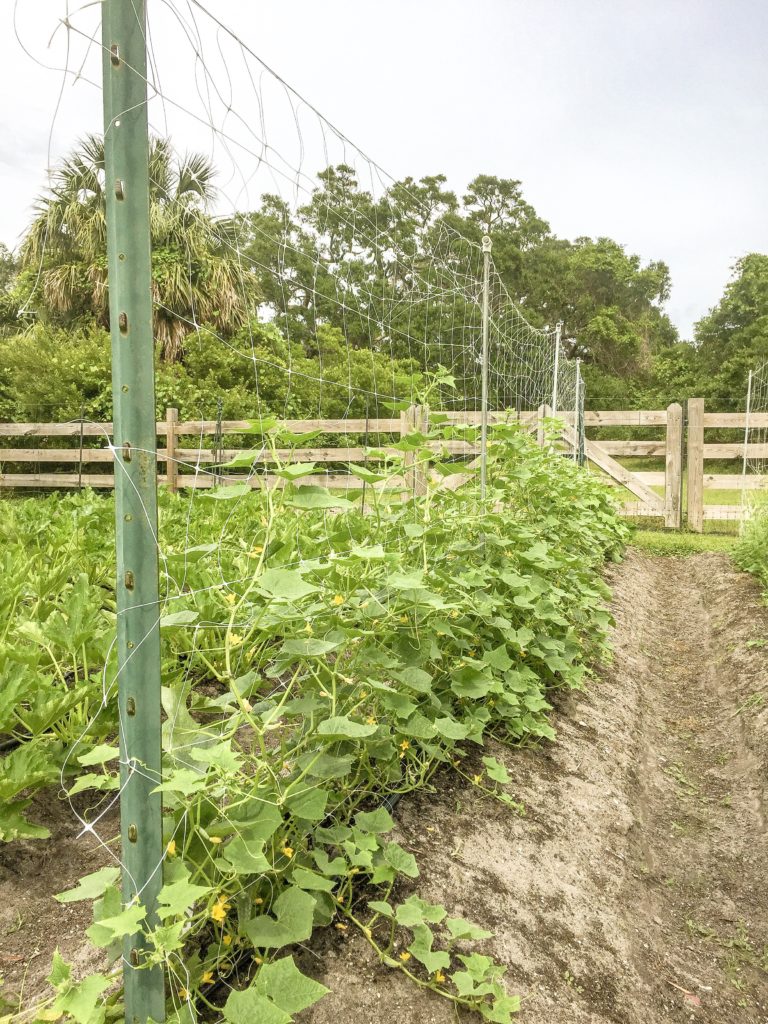
Trellising is all about timing. For climbing crops like cucumbers, beans, and peas, setting up a trellis system while the crops are young or just emerging from the ground is best. For these crops we use a plastic netting, but hog panels or welded wire works well too. Start by pounding 6-feet-long t-posts or sturdy stakes in the ground every four feet. Then, attach the netting to the stakes by either weaving it onto the posts or tying it with wire. Make sure there is tension from post to post to ensure a sturdy trellis. Installing this while the plants are young will encourage them to train up the netting right away. If not, the vines will begin to sprawl on the ground and you’ll have to manually train them to climb up the netting.
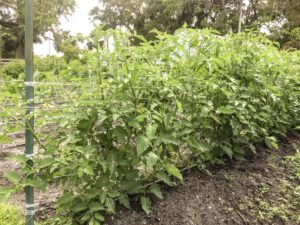
FLORIDA WEAVE TRELLISING
For crops like tomatoes, peppers, and eggplant, we like to wait until they are about a foot tall to start adding any support. For these crops we use a system nicknamed the “Florida Weave,” but also known as a Basket Weave. Like the previous trellis, you’ll start by pounding 6-feet-long posts every 4 feet. Using a polypropylene twine (you can purchase at Johnnyseeds.com or at a local feed store), start at the first post, wrap the twine around the post several times about six inches above the ground and tie a knot. From your knot, take the rest of the twine to the next post and wrap it around a few times making sure the string is somewhat level and very tight. Continue this until you reach you last post and tie it off. Now, start at that last post but on the other side of the crops and go back down the row so that there is string on both sides of the plants. As your crops get taller, you’ll want to add more twine to both sides about every six inches in height. Helpful hint: Do not use “natural” twines. They run the risk of breaking mid-season and your crops may collapse. Again, timing is key and waiting too long to trellis can make it harder to install, possibly damage crops, and will not be as effective.
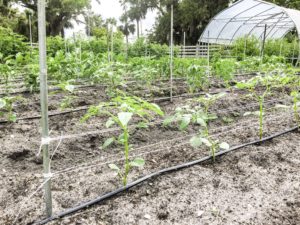
STRING METHOD TRELLISING
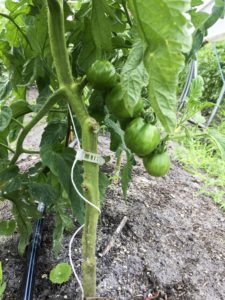
Our final trellis system is the “String Method” in our hoop house exclusively for tomatoes and cucumbers. A hoop house, or high tunnel, is a greenhouse-like structure covered in plastic that uses passive solar heating and venting to control the interior climate and create ideal growing conditions. For this method, we use thin metal cable, Rollerhooks from Johnnyseeds.com that have a spool of twine attached to a hook, and tomato trellis clips. In the hoop house, we install the cable running several feet above the row of crops to the end walls of the house. To make sure these cables are tight, use turnbuckles on either end. The Rollerhooks attach easily to the cable. Hang one above each tomato/cucumber plant. Pull the twine down to meet the base of the plant and use the clips to hold the stem of the plant to a taut trellis line. Now that you have a tight vertical string, you can wrap the stem or vine of the plant around the twine. You’ll need to continue to wrap the stem around the twine or add more clips at least once a week. If the plants ever reach the Rollerhooks, unroll more twine to drop the plants to the ground and they’ll continue to climb!
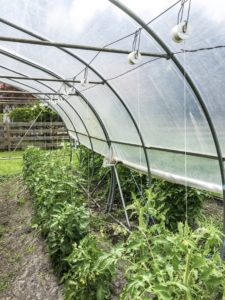
Now, you have a tall sturdy crop, fully supported and ready to harvest!
– Monica Ponce and Russell Honderd
Monica Ponce and Russell Honderd are the gardeners at Greyfield Inn.
